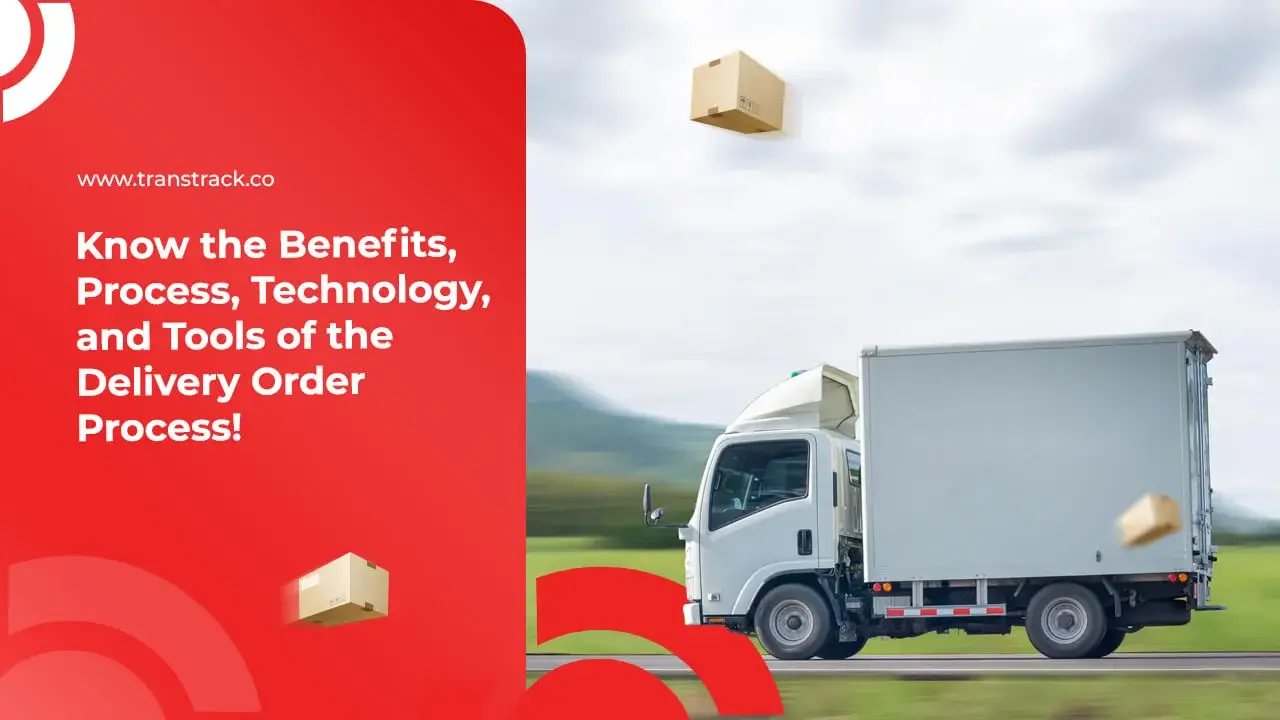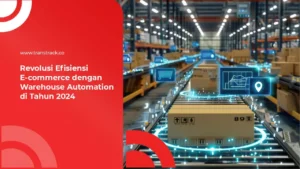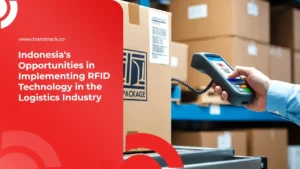Know the Benefits, Process, Technology, and Tools of the Delivery Order Process!
Posted on June 18, 2024 by Nur Wachda Mihmidati

In the era of globalization and fierce market competition, efficiency and timeliness are key to maintaining a company’s competitiveness. One of the most important things in maintaining efficiency and timeliness in the supply chain is the delivery process, which often starts with a document known as a Delivery Order (DO).
With the growing complexity of logistics networks and increasing customer demand, companies must be able to manage the delivery process well, from the receipt of orders to the receipt of goods by customers. In this context, Delivery Order becomes a vital bridge in ensuring that goods are delivered precisely, efficiently, and in accordance with customer expectations.
In this article TransTRACK, we will explore more about what a Delivery Order is, its importance in business operations, and the technologies and tools that can be used to support this process. Let’s start by understanding the basic concept of a Delivery Order and how it plays a key role in the modern supply chain.
What is a Delivery Order?
A Delivery Order (DO) is a document issued by the owner of the goods or by an authorized party (such as a shipping agent) to the consignee or other authorized party to pick up the goods from a warehouse, port terminal, or other storage location. This document is usually used in the process of shipping goods to facilitate the release of goods from storage and ensure that the goods are received by the rightful party.
In the context of international trade, Delivery Orders are an important part of the logistics and distribution chain, helping to ensure that goods can be distributed appropriately and efficiently.
Benefits of Delivery Order
Delivery Order (DO) provides a number of significant benefits in a business and logistics context, contributing to customer convenience, increased sales, and operational efficiency. Here is a more detailed explanation of each of these benefits:
1. Customer Convenience
Delivery Order (DO) provides convenience to customers through transparency and certainty in the delivery process. With DOs, customers can easily track the status of their deliveries, including information on the time and location of pickup. This not only increases customers’ trust in the company, but also provides them with certainty regarding the pickup schedule. With a more structured arrangement, customers can plan their time better, which ultimately increases customer satisfaction. In addition, the presence of DOs also increases the security of item retrieval, as it ensures that items can only be retrieved by authorized parties, reducing the risk of loss or theft of items.
2. Increased Sales
DO not only ensures customer convenience, but also contributes to the company’s increased sales. A reliable and efficient delivery process, facilitated by DOs, builds customer trust in the company. Customers who are satisfied with the service provided are more likely to become repeat customers and recommend the service to others. In other words, the reliability of the delivery process can increase customer loyalty. In addition, companies can offer various attractive shipping options, such as faster or cheaper shipping, to attract more customers and increase sales.
3. Operational Efficiency
DOs also help in improving a company’s operational efficiency. This document allows for better stock management, by providing accurate information on the number of items that should be prepared for shipment. This reduces the risk of overstock or understock, which can negatively impact a company’s operations. In addition,
DO also results in reduced time and costs in the delivery process. With a more structured and efficient process, companies can save on the time required to manage the shipment of goods and reduce the associated operational costs. Better coordination between the various parties involved in the supply chain is also enhanced through DOs, reducing the risk of errors and delays in delivery. It also provides the necessary documentation for tracking and auditing, ensuring that all transactions are properly recorded and making it easier to resolve disputes in case of problems. As such, DOs not only facilitate a smoother process of shipping goods, but also improve the overall operational efficiency of the company.
Delivery Order Process
The Delivery Order (DO) process is a series of steps involving various stages, starting from receiving an order to receiving the goods by the customer. The following is a brief explanation of each stage in the DO process:
1. Order Receipt
The process begins with the receipt of orders from customers. These orders can be received through various channels, such as in person at a physical store, through a website, or through a phone call. The order information should include details of the items ordered, the quantity, and shipping information such as the destination address and preferred shipping method. Once the order is received, the next step is order processing.
2. Order Processing
Once an order is received, the company will process the order. This step involves verifying the order details, preparing the ordered goods, and scheduling the shipment. During the processing process, the company may also prepare the necessary documents for shipment, including the Delivery Order. Once the preparation is complete, the goods are ready for shipment.
3. Order Delivery
Once the goods are ready, the next step is shipping the order to the customer. The company will use the delivery method chosen by the customer, such as direct delivery by the company or through a third-party delivery service. Prior to shipment, the company will draw up shipping documents that include a DO as permission to pick up the goods at the storage location. Once the goods are shipped, the customer will receive a notification or tracking number to monitor the status of the shipment.
4. Acceptance by Customer
The final step in the DO process is the receipt of the goods by the customer. Once the goods arrive at the destination address, the customer will receive their order. The customer can acknowledge receipt of the goods by signing the receipt or delivery confirmation. This process marks the completion of the order and ensures that the goods have been properly received by the customer.
Through this series of steps, the Delivery Order process ensures that customer orders are processed and shipped appropriately, efficiently, and transparently, thereby improving customer satisfaction and the company’s operational efficiency.
Technology and Tools to Support Delivery Order
To support the Delivery Order (DO) process, there are various technologies and tools that can be used to improve efficiency and service quality. Here are some examples:
1. Online Apps and Platforms
Apps and online platforms are very useful solutions for managing orders and organizing delivery of goods. It allows customers to place orders easily through their devices, monitor order status, and even communicate directly with the company. In addition, the app also facilitates the electronic delivery of DOs, speeding up the process of retrieving goods from warehouses or storage locations.
2. Order Management System
An order management system is software specifically designed to manage orders from receipt to shipment. It allows companies to track every step of the DO process, including order verification, processing, shipping, and receipt by the customer. The system can also integrate order information with inventory and accounting systems, ensuring data consistency and accuracy.
3. Shipping Technology
GPS and tracking technologies allow companies to monitor the position and status of shipments in real-time. This not only gives customers greater visibility into the location of their orders, but also enables companies to identify and address delivery issues more quickly.
Innovations such as the use of drones and robots for delivery can speed up the delivery process, especially for deliveries within a limited radius or in areas that are difficult to reach by motorized vehicles. The use of these technologies can also reduce delivery costs in the long run and provide a unique experience to customers.
By utilizing these technologies and tools, companies can increase operational efficiency, improve service quality, and provide a better experience to customers in the Delivery Order process.
In streamlining the Delivery Order (DO) process, technology plays an important role in improving efficiency and service quality. By using TransTRACK’s Transportation Management System (TMS), companies can optimize every step from order receipt to final delivery to customers.
TransTRACK’s TMS provides a comprehensive solution for managing orders, coordinating shipments, and monitoring deliveries in real-time. With advanced features such as GPS integration, shipment tracking, and in-depth data analysis, companies can identify opportunities to improve operational efficiency and optimize delivery networks.
By adopting TransTRACK TMS, companies can speed up the delivery process, reduce operational costs, and increase customer satisfaction. So, don’t hesitate to switch to TransTRACK and take the first step towards more efficient and effective logistics management. Contact us for more information and be part of the digital logistics transformation today!
Recent Post
Topic :
 Bahasa Indonesia
Bahasa Indonesia









